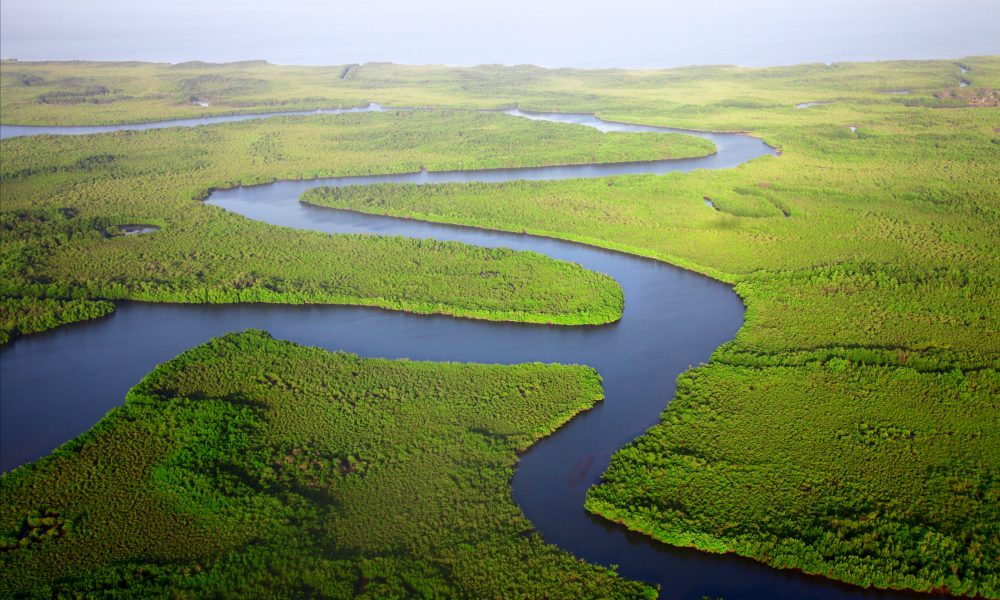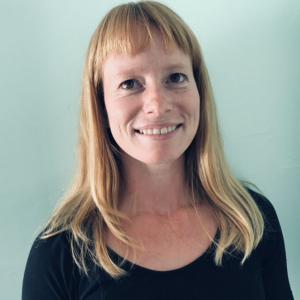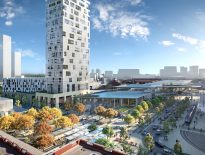Working together to meet Sustainable Development Goal 6 and Agenda 2030.
With just 9 years left to achieve the 2030 Agenda for Sustainable Development it is critical that we – individually and collectively – are being thoughtful and deliberate in our work together to ensure success. Here at the International Living Future Institute, we are committed to Agenda 2030 and doing our part to accelerate progress towards success. This article is intended to catalyze action toward a specific goal; Sustainable Development Goal 6: Ensure availability and sustainable management of water and sanitation for all. Water is a global resource, essential to all life on earth. It is both abundant and scarce. Meeting SDG 6 requires cooperation and collaboration across all sectors of society, all around the world.
As a new member of the International Living Future Institute (ILFI) team and the Manager, Buildings + Water, I wanted to understand how ILFI is contributing towards the 2030 Agenda for Sustainable Development and the Sustainable Development Goals (SDG’s), particularly as it relates to water. With the acceleration of climate change, I believe it is essential to ensure we are all working together towards a common goal, regardless of the sector, country, or region in which we operate. As is the case with all wicked problems, we cannot solve this on our own, it will take global collaboration and cooperation if we want to achieve success.
In my pursuit for broader understanding of where ILFI and our various programs fit into the SDG’s and 2030 Agenda I enrolled in the SDG Academy’s course Water: Addressing the Global Crisis with a focus on SDG 6 Water and Sanitation. The goal of SDG 6 is to “Ensure availability and sustainable management of water and sanitation for all.” The course consists of 9 modules with in-depth analysis of each target and relevant indicator; status updates on progress; linkages between water environment and societal development; and a wide range of case studies from around the world. If I had to summarize what I learned in one sentence, it would be this: although there has been great progress on SDG 6, WE ARE NOT ON TRACK TO MEET THESE GOALS BY 2030.
The UN uses 8 Targets, with 11 global indicators to track progress towards SDG 6.
Target 6.1
By 2030, Achieve universal and equitable access to safe and affordable drinking water for all.
Indicator 6.1.1 Proportion of population using safely managed drinking water services
Target 6.2
By 2030, achieve access to adequate and equitable sanitation and hygiene for all and end open defecation, paying special attention to the news of women and girls and those in vulnerable situations
Indicator 6.2.1 Proportion of population using safely managed sanitation services, including a hand-washing facility with soap and water
Target 6.3
By 2030, improve water quality by reducing pollution, eliminating dumping and minimizing release of hazardous chemicals and materials, halving the proportion of untreated wastewater and substantially increasing recycling and safe reuse globally
Indicator 6.3.1 Proportion of wastewater safely treated
Indicator 6.3.2 Proportion of bodies of water with good ambient water quality
Target 6.4
By 2030, substantially increase water-use efficiency across all sectors and ensure sustainable withdrawals and supply of freshwater to address water scarcity and substantially reduce the number of people suffering from water scarcity
Indicator 6.4.1 Change in water-use efficiency over time
Indicator 6.4.2 Level of water stress: freshwater withdrawal as a proportion of available freshwater resources
Target 6.5
By 2030, implement integrated water resources management at all levels, including through transboundary cooperation as appropriate
Indicator 6.5.1 Degree of integrated water resources management implementation (0-100)
Indicator 6.5.2 Proportion of transboundary basin area with an operational arrangement for water cooperation
Target 6.6
By 2020, protect and restore water-related ecosystems, including mountains, forests, wetlands, rivers, aquifers and lakes
Indicator 6.6.1 Change in the extent of water-related ecosystems over time
Target 6.a
By 2030, expand international cooperation and capacity-building support to developing countries in water- and sanitation-related activities and programmes, including water harvesting, desalination, water efficiency, wastewater treatment, recycling and reuse technologies
Indicator 6.a.1 Amount of water- and sanitation-related official development assistance that is part of a government-coordinated spending plan
Target 6.b
Support and strengthen the participation of local communities in improving water and sanitation management
Indicator 6.b.1 Proportion of local administrative units with established and operational policies and procedures for participation of local communities in water and sanitation management
The graphic below gives a snapshot of some of the current progress towards the 8 Targets, but doesn’t provide a complete picture. Many UN Member States are only reporting on some of the indicators associated with each target, none of the indicators have reached 100% reporting, and some indicators don’t even have enough data to report. It is essential to understand what information, and who, is being left out in order to find successful solutions.
For example, the graphic shows that 46% of the world’s people still lack safely managed sanitation. However, only 66% of UN Member States are reporting on Indicator 6.3.1- Wastewater treatment, and thus included in that statistic. What is the status of the remaining 34% of UN Member States? Although this indicator emcompases services and industrial wastewater as well, there is no data available for either of these categories.
The graphic shows 2.3 billion people live in water stressed countries. This number is reporting on Target 6.4 and is specifically related to Indicator 6.4.2 – Water stress. To dive a little deeper into the data; on the global scale, 17% of the world’s renewable water resources is currently being withdrawn, but when reviewed at the regional scale that percentage grows to over 70% in Central and Southern Asia and Northern and Western Africa, and exceeds 100% in 16 nations. What are the implications of such unbalanced water stress?
According to current data on Indicator 6.3.2 – Water Quality, 72% of the world’s monitored water bodies have good ambient water quality, which sounds pretty good! But when you take a closer look at the details, only about 50% of UN Member States are even reporting on this indicator, so many bodies of water are going unmonitored.
These snapshots give us a glimpse at some of the challenges we face. Ensuring all humans have access to the basics – clean water, sanitation, and hygiene is no small feat, and we have a ways to go to reach our goal or even to understand exactly how far we are from reaching the goal. More resources need to be allocated towards water management at every level, from the household to transboundary. Ensuring healthy water ecosystems is critical to meeting all of the targets under SDG 6 as well as addressing the vast inequities in water access and availability. So how do we, in the building industry, contribute to progress towards SDG 6?
Inspired by this course, I have spent many hours over the last months considering the global water crisis. How can I, on a personal level, be part of the solution, not the problem? How do I, as a member of a local community, professional community, and ecological community leverage my skills, knowledge, education, and privilege to contribute to positive change? And finally, how does ILFI, as an organization with the ambitious mission of leading the transformation toward a civilization that is socially just, culturally rich, and ecologically restorative, leverage it’s programs and global network to accelerate progress towards the 2030 Agenda, specifically, SDG 6?
In early 2020, ILFI joined the United Nations Global Compact, committing to support the Ten Principles which focus on human rights, labour, environment, and anti-corruption. Last fall, ILFI completed an analysis of how ILFI’s programs align with the objectives of the SDGs as part of this commitment. In principle and mission, it’s clear that ILFI is in alignment with the SDGs, but what is not so clear is how the Living Building Challenge (LBC) and Core Green Building Standard (Core) Imperatives actually contribute in meaningful and measurable ways to meeting the global indicators. When an LBC project anywhere in the USA reduces water consumption, captures rainwater for irrigation and other water demands, and doesn’t connect to the municipal utility grid for sanitation, this helps realign how we value water, connect us to the natural water flows of the site and community, and alleviate local water or utility issues but is it truly regenerative to the regional or global water ecosystem? Does it help to meet SDG 6 – to ensure availability and sustainable management of water and sanitation for all? Depending on the situation, I think the answer can be yes or no or possibly. This is where I believe we need to challenge ourselves, so that the answer is always yes!
Water is a global resource, and a global challenge. We cannot, therefore, expect to reach our goals by only addressing water on a project by project basis. In regions of the world with an abundant supply of water and existing infrastructure to deliver such water the challenge may be one of reducing consumption, taking care to use potable water only for potable needs, and not contributing to irresponsible or outdated treatment or disposal systems. But what about projects in regions that have severe water deficits – who or what gets priority, and why? What about regions that struggle to deliver basic access to clean water and sanitation? What about the many individuals and communities that have been left out of the water conversation – how do we engage with them and ensure their water needs are met?
We all share responsibility in meeting the goals for SDG 6. It is therefore essential to understand how our actions on a project level influence water quality, availability, access, and management. We should be asking questions such as, where does my water come from and why? Are there other humans or ecosystems that are impacted by my use of this water? What are the critical water issues in my area and how can my project be part of the solution? How can this project actively accelerate progress towards SDG 6?
So what does this all mean for ILFI? For LBC? For the building industry? For your next project? How do we evaluate the global implications of our design choices when it comes to water? And how do we leverage our positions in society to accelerate progress toward Agenda 2030? The intent of this article is not to provide answers to these questions, but to spark conversation, to encourage our readers and the broader community to ask these questions, explore solutions, and reach out to each other and us at ILFI to share ideas.
Here is a list of questions and ideas to get us started on this broader mission to achieve SDG 6 – to initiate conversation, encourage innovation, and catalyze change. These questions have been loosely arranged by key issues as a way to organize areas of focus. That said, most water issues do not fit neatly into categories, so don’t let organization limit imagination!
Place and Ecosystems
- What tools or methods exist to conduct holistic analysis of local and regional water ecosystems and water cycles, and how can such analysis be used to inform design and identify focus areas for local and regional advocacy or policy work?
- What programs, organizations, or projects can ILFI partner with to support ecological restoration or Nature Based Solutions (NBS) specific to water-ecosystems, and how can project teams pool resources to increase impact? Is Handprinting a feasible pathway or is the Habitat Exchange a more appropriate approach?
- Core and LBC do not allow potable water for irrigation, but in places that suffer from periods of severe drought or low water resources, projects may be reducing potential food production to meet this requirement, which means food that could have been grown on site will be imported from another location, which may be more resource intensive. Does that meet the intent of this requirement? How can we better achieve fit for purpose water use while also accounting for externalities?
Responsible Water Use & Integrated Water Resource Management
- How should ILFI encourage, support ,and engage in advocacy and/or policy work to drive change in water management and policy from the local to global level?
- The impact of climate change on water related weather (flooding and droughts) is unpredictable and constantly evolving. How do we continuously adapt to changing conditions and needs at the project level? Should we incorporate planning, and/or education and community engagement, in disaster risk reduction strategies into our program requirements and if so, should it apply at all project scales and typologies?
- Not everyone is comfortable being the first to try a new approach or idea (from the individual to the national level). Can we develop a crowd sourced case study database of successful water and Nature Based Solutions at all scales and typologies around the world, to help project teams, advocates, and policymakers drive and accelerate change?
Water-Energy Nexus and Accounting for Impacts
- How can we be better about accounting for the energy costs associated with water transport and use? Should this be a priority and at what scale?
- Can we measure projects’ virtual water impact? Are there resources or tools that could be applied to the built environment? At what scale should virtual water impact matter? Should projects be required to offset virtual water impacts?
- Water Offsets are an emerging opportunity. What are examples of Water Offset projects or programs and how can this concept be applied to ILFI’s existing programs? Where is the best fit?
Equity, Access, + Inclusion
- How do we address water supply and quality inequities in the built environment through tools like certifications and labels? How else might we address these inequities?
- Only 54% of the world population uses a safely managed sanitation service. Should Handprinting opportunities (related to acceptable outflow management) expand to allow for Handprinting beyond the same municipal system to contribute to progress on SDG 6.2.1- Proportion of population using safely managed sanitation services? If so, should projects prioritize biggest impact, highest need, or proximity to project location?
- There is a dire need to build capacity in the water sector, how do we create pathways for education and professional development? Who should lead this effort? What types of resources, tools, courses or opportunities can ILFI lead, contribute to, or support?
- How do we be more intentional about engaging with communities that have been left out? Communities that are not pursuing product labels or building certifications? How can we ensure no one is left behind?
- How can ILFI support the work of communities and organizations around the world working on these issues?
On an ongoing basis and over the next few years in particular, ILFI will be working to evolve our approach to water to respond to these challenges, to ensure that our programs and work are not only aligned with the SDGs and the 2030 Agenda, but that they are actively accelerating progress toward achieving them. We know we cannot tackle climate change on our own, meet the Sustainable Development Goals alone, or achieve ILFI’s mission alone.
So here is our call to action. Reach out to your friends and neighbors, farmers and faith groups, to your peers and professional networks, to your local government, education institutions, and community leaders. Start conversations, explore partnerships and collaborative opportunities, exchange ideas and information, brainstorm solutions and innovations, listen, and act. And reach out to us, at ILFI, we want to hear your voices. We need you, your ideas, your experiences, and your expertise, to help us achieve our mission of a socially just, culturally rich and ecologically restorative world. You can share ideas with me and others at ILFI by emailing LBC Support with “UN SDG 6” in the subject line. You can also stay connected with ILFI and forthcoming opportunities from ILFI to engage in conversation and join a water working group by becoming a member.
“Individually, we are one drop. Together, we are an ocean.” – Ryunosuke Satoro



